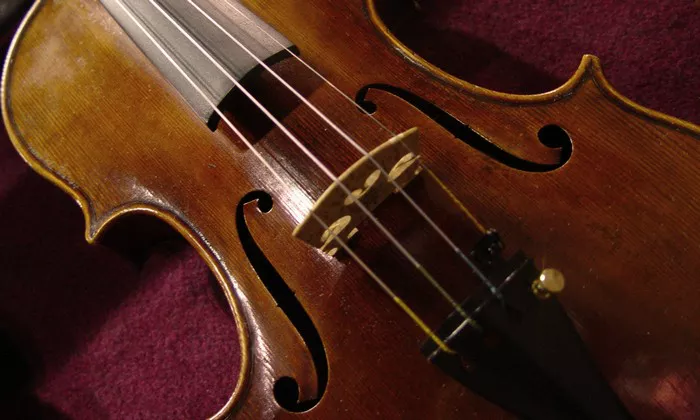Violins come in a wide range of prices, from budget-friendly options to high-end instruments commanding hefty sums. Understanding why violins vary in price can help musicians make informed decisions when purchasing their next instrument. In this article, we’ll explore the factors that influence violin prices, examine the differences between cheap and expensive violins, and offer advice for finding the right violin for your needs.
Understanding Violin Prices
Violin prices can vary significantly based on several factors, including craftsmanship, materials, brand reputation, and historical significance. Handmade violins crafted by master luthiers using premium tonewoods and traditional techniques tend to command higher prices due to their superior quality and craftsmanship. On the other hand, factory-made violins produced in large quantities using lower-quality materials and assembly-line methods are typically more affordable.
What is the Difference Between Cheap and Expensive Violins?
Craftsmanship: One of the most significant differences between cheap and expensive violins is the level of craftsmanship involved in their construction. Expensive violins are often handmade by skilled luthiers who have spent years honing their craft. These instruments are meticulously crafted using traditional techniques and premium materials, resulting in superior tone, playability, and aesthetic appeal. Cheap violins, on the other hand, are often mass-produced using automated machinery and lower-quality materials, resulting in inferior sound quality and craftsmanship.
Materials: Another key difference between cheap and expensive violins is the quality of materials used in their construction. Expensive violins are typically made from premium tonewoods such as aged spruce, maple, and ebony, which are carefully selected for their resonance, stability, and beauty. In contrast, cheap violins may be made from lower-grade woods or synthetic materials, which can negatively impact the instrument’s tone and durability.
Sound Quality: Expensive violins are renowned for their rich, complex sound and superior projection. These instruments are carefully handcrafted to maximize their acoustic properties, resulting in a nuanced and responsive tone that resonates with clarity and depth. Cheap violins, on the other hand, often have a dull, muffled sound with limited dynamic range and projection. The inferior craftsmanship and materials used in their construction contribute to these sonic shortcomings.
Playability: Expensive violins are designed to offer exceptional playability and responsiveness, allowing musicians to express themselves with ease and precision. These instruments typically feature well-carved necks, properly fitted fingerboards, and precisely positioned strings and bridge. Cheap violins, by comparison, may have rough or uneven fingerboards, poorly set-up bridges, and subpar fittings, which can make them difficult and uncomfortable to play.
Aesthetic Appeal: In addition to their superior sound and playability, expensive violins often boast exquisite craftsmanship and aesthetic details that set them apart. From finely carved scrollwork and ornate purfling to hand-applied varnish and meticulous finishing touches, these instruments exude beauty and elegance. Cheap violins, by contrast, may have rough or sloppy finishes, inconsistent varnish application, and generic design features that lack character and charm.
Advice for Finding the Right Violin
Set a Realistic Budget: Determine your budget and stick to it when shopping for a violin. Consider factors such as your skill level, musical goals, and long-term commitment to playing the instrument. While expensive violins offer superior quality and craftsmanship, there are also many affordable options available that provide excellent value for money.
Play Before You Pay: Whenever possible, try out different violins in person before making a purchase. Pay attention to factors such as sound quality, playability, and comfort, and choose a violin that feels and sounds right to you. Consider seeking the guidance of a knowledgeable teacher or luthier to help you evaluate potential instruments.
Do Your Research: Take the time to research different violin makers, brands, and models to find the right instrument for your needs. Read reviews, watch demonstration videos, and gather as much information as possible to make an informed decision. Consider factors such as tonewood selection, construction techniques, and customer satisfaction when evaluating potential violins.
Consider Used or Vintage Instruments: Don’t overlook the possibility of purchasing a used or vintage violin, which can offer excellent value and quality for a lower price. Many professional musicians prefer the warm, mature sound of older instruments, which may be available at a fraction of the cost of a new violin.
Invest in Quality Accessories: Once you’ve found the right violin, invest in quality accessories such as a well-fitted chin rest, shoulder rest, and bow to enhance your playing experience. These accessories can improve comfort, stability, and tone production, allowing you to get the most out of your instrument.
Conclusion
In conclusion, the difference between cheap and expensive violins lies in craftsmanship, materials, sound quality, playability, and aesthetic appeal. While expensive violins offer superior quality and performance, there are also many affordable options available that provide excellent value for money. By setting a realistic budget, playing before you pay, doing your research, considering used or vintage instruments, and investing in quality accessories, you can find the perfect violin to suit your needs and musical aspirations.


